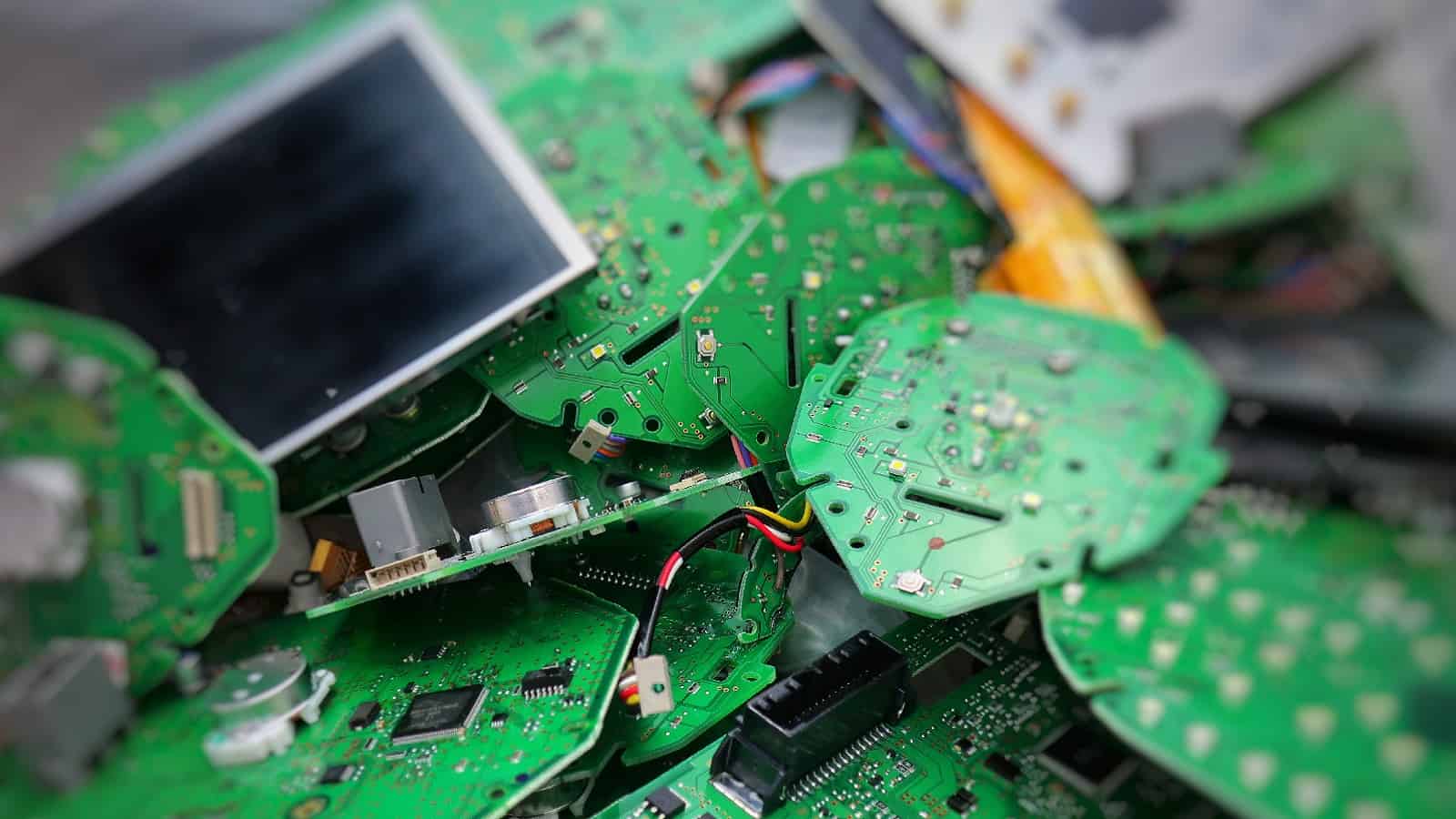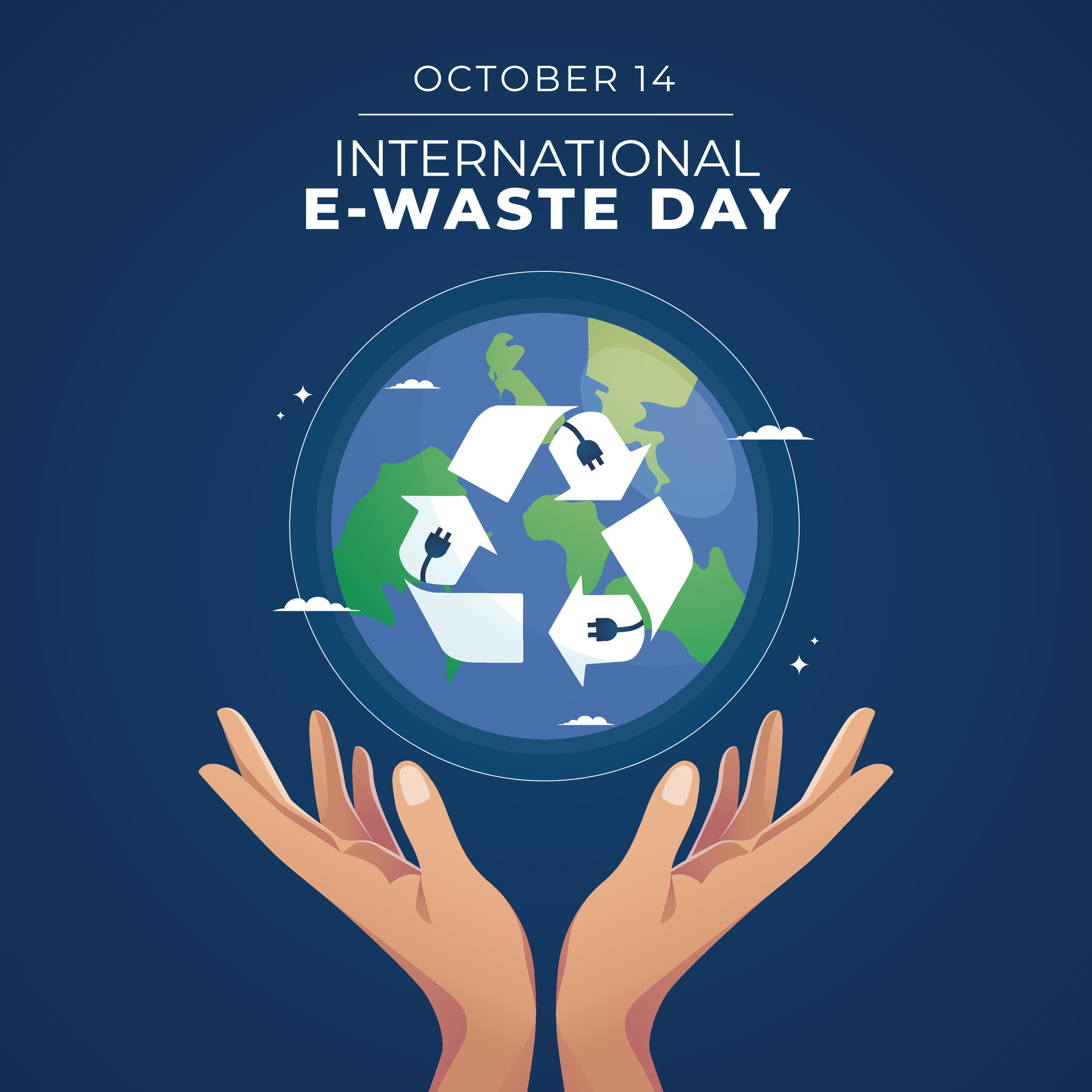International E-Waste Day is a global initiative aimed at raising awareness about the growing problem of electronic waste (e-waste) and encouraging responsible disposal and recycling of electronic devices. International E-Waste Day is a global awareness-raising campaign aimed at promoting the responsible disposal and recycling of electronic waste, or e-waste. It’s an annual event observed on October 14th each year and is organized by the WEEE Forum, an international association of e-waste collection and recycling organizations.
What is E-Waste
E-waste refers to discarded electronic devices and equipment, such as old computers, smartphones, televisions, and household appliances. These items often contain hazardous materials, including heavy metals and toxic chemicals, which can be harmful to the environment and human health if not disposed of properly.
Due to their small size, items such as mobile phones, electric toothbrushes, toasters, and cameras are often discarded incorrectly, and they make up a significant proportion of the 8% of e-waste that is thrown in waste bins, to be landfilled or incinerated. This means the important raw materials they contain cannot be extracted and are lost.
E-waste is a significant environmental concern due to the toxic substances it contains, as well as the valuable materials that can be recovered through recycling. Addressing the issue is crucial for reducing the environmental impact of electronic waste and promoting a more sustainable approach to electronic consumption and disposal.

Electronic waste, often referred to as e-waste, is a growing global issue with significant environmental and social implications. Here are some key facts about electronic waste:
- Rapid Growth: The production of electronic devices and equipment has been steadily increasing, leading to a corresponding rise in e-waste. This is driven by factors such as technological advancements, shorter product lifespans, and increased consumer demand for electronic gadgets.
- Hazardous Materials: Electronic devices contain various hazardous materials, including lead, mercury, cadmium, and brominated flame retardants. When improperly disposed of, these substances can leach into the soil and water, posing risks to human health and the environment.
- Environmental Impact: E-waste poses a significant threat to the environment. The improper disposal and recycling of e-waste can result in soil and water pollution, damage to ecosystems, and the release of greenhouse gases when incinerated.
- Health Risks: Workers in informal e-waste recycling facilities, often located in developing countries, are exposed to dangerous chemicals and conditions. This can lead to health problems, including respiratory issues, skin disorders, and neurological problems.
- Electronic Waste Generation: In 2019, it was estimated that the world generated approximately 53.6 million metric tons of e-waste. This number is expected to continue rising as technology becomes more prevalent in our lives.
- Recycling Rates: The recycling rate for e-waste is relatively low, with a significant portion of discarded electronics ending up in landfills or being incinerated. Recycling can recover valuable materials like metals and reduce the environmental impact of e-waste.
- E-Waste Legislation: Many countries have implemented laws and regulations to manage e-waste responsibly. These laws often require manufacturers to take responsibility for recycling and properly disposing of their products at the end of their life cycles.
- Resource Recovery: Recycling e-waste can recover valuable resources, including precious metals like gold, silver, and copper. This reduces the need for mining and extraction of new raw materials.
- Extended Producer Responsibility (EPR): EPR programs require manufacturers to manage the entire lifecycle of their products, including recycling and disposal. These programs can incentivize companies to design products with easier recycling and disassembly in mind.
- Sustainable Practices: Consumers can contribute to reducing e-waste by adopting sustainable practices, such as repairing and refurbishing electronic devices, donating old equipment, and recycling electronics through authorized collection points or programs.
- Circular Economy: The concept of a circular economy promotes the idea of keeping products and materials in use for as long as possible through recycling, refurbishment, and responsible disposal, reducing the generation of e-waste.
- International E-Waste: Electronic waste is a global issue, and electronic devices often end up in developing countries where regulations and recycling infrastructure may be lacking, leading to significant environmental and health challenges.
Addressing the challenges of electronic waste requires a combination of responsible consumer choices, effective recycling programs, and international cooperation to reduce its environmental and social impacts.
The primary goals of E-Waste Day are to:
- Raise Awareness: International E-Waste Day aims to educate individuals, businesses, and governments about the environmental and health hazards associated with improper disposal of e-waste. It highlights the importance of recycling and proper e-waste management.
- Promote Recycling: The event encourages the recycling of electronic devices to recover valuable materials and reduce the environmental impact of e-waste. Recycling helps conserve resources and reduce pollution.
- Support Sustainable Practices: International E-Waste Day promotes sustainable practices in the electronics industry, such as designing products with longer lifespans, making them easier to repair, and reducing the use of hazardous materials.
- Mobilize Stakeholders: It brings together various stakeholders, including governments, businesses, non-governmental organizations, and individuals, to collaborate in addressing the e-waste problem.
- Highlight the global issue: The campaign emphasizes the growing global problem of e-waste and the need for international cooperation to address it.
- Educate about responsible consumption: It also promotes responsible consumption patterns, such as extending the lifespan of electronic devices and making informed choices when purchasing new ones.
To participate in International E-Waste Day, organizations and communities often organize events, awareness campaigns, and collection drives for old and unwanted electronic devices. These activities aim to engage the public and promote responsible e-waste disposal and recycling.

What is the invisible e-waste?
Invisible e-waste refers to electronic waste that goes unnoticed due to its nature or appearance, leading consumers to overlook its recyclable potential. As today’s lifestyle is more and more technology-oriented, a lot of products present on the market have electrical or electronic components. This means that at the end of their lives when they can no longer be reused or repaired, they should be part of the electronics recycling stream. Some examples of this type of object, largely present in households are electric and electronic toys, e-cigarettes, power tools, smoke detectors, wearable health devices, smart home gadgets, e-bikes and e-scooters, or simply cables.
When electronic devices and components are disposed of improperly because they are not recognized as electronic waste, they often end up in landfills or incinerators. Electronics contain various hazardous substances such as lead, mercury, cadmium, and flame retardants, which can leach into soil and water sources, pollute ecosystems, and pose risks to human health.
These devices also contain valuable resources, including precious metals like gold, silver, and copper, as well as rare and strategic elements, called Critical Raw Materials, which are crucial for the green transition and production of new electronic devices. When electronic waste is not recycled properly, these valuable materials go to waste.
The theme of International E-waste Day 2023 is “You can recycle anything with a plug, battery or cable!”. The theme highlights the issue of invisible e-waste, which are electronic items that are often not seen as e-waste and therefore don’t get recycled.
The purpose of International E-waste Day is to inform the public about the importance of recycling e-waste to conserve resources, reduce environmental pollution, and prevent health hazards associated with improper disposal methods such as burning or landfilling electronic devices. Various organizations, recycling centers, and governmental bodies participate in awareness campaigns, educational programs, and collection drives to encourage people to recycle their old electronic devices responsibly.
E-waste is a global problem that affects our health and environment. By promoting International E-waste Day, organizers aim to encourage individuals, businesses, and communities to take action and contribute to the sustainable management of electronic waste, thereby protecting the environment and conserving valuable resources.
Sustainability With Prachi
To sum up, This is my conscious lifestyle post to spread more awareness about sustainable living and eco-friendly choices. Join me for more such ways and tips and become part of my Conscious and sustainable living journey. Be aware of eco-friendly and conscious lifestyles, and alter your lifestyle. Keep visiting my blog to make sustainable choices.
To add on, read and join the Sustainability with Prachi series and listen to interviews with Eco-conscious people who are trying their bit towards conscious and sustainable living practices only on Green Tatwa Talks. There is so much to learn and explore from all of them I have interacted with, Do listen and drop in your views in the comments. Check here to learn more about all the Eco-Friendly dates.
Being Eco-Friendly is not a choice, make it a habit.
Without a doubt, sustainability is easier than you think. You don’t have to jump in by changing everything. Start small to make the changes more eco-friendly, sustainable and a part of your daily life.

Leave a Reply